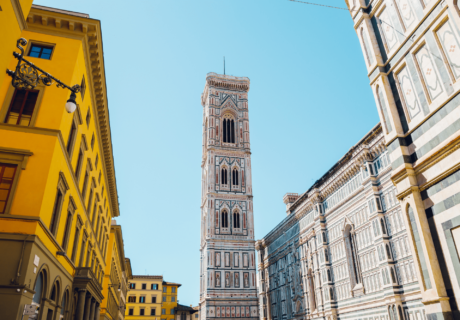Gardens to visit in Florence
5 min · 30 May 2023

Florence is not only the cradle of art, it is also and above all a city extraordinarily rich in gardens. These are veritable open-air museums filled not only with flowers and greenery but also with history. Scattered practically everywhere, they are places to experience and explore.
Let’s discover together the most beautiful, and absolutely must-see, gardens in Florence.
BOBOLI GARDEN
The most famous is the enchanting Boboli Garden, located in the centre of Florence, behind the Pitti Palace. Due to its location, it is the ideal place to relax between visits to the countless attractions offered by the lily city. Beloved by Florentines as well as tourists, it is one of the world’s greatest examples of the Italian garden. Its vast green area is home to a large number of ancient and Renaissance statues, sculptures, fountains and architecture, often created by great artists. Highlights include the Fountain of Ocean by Giambologna and the famous Grotta Grande, created by Bernardo Buontalenti. Of particular charm is the terraced area where the 18th-century Kaffeehaus pavilion is located, a rare example of the Rococo style in Tuscany, from which a fantastic view of the city can also be admired.
BARDINI GARDEN
Another beautiful garden not to be missed is that of Villa Bardini, a long abandoned historic Florentine residence that was reopened to the public in 2006 with new spaces for events and exhibitions. Located in the Oltrarno area, the garden owes its name to the art collector Stefano Bardini, who bought it in 1913 and thoroughly renovated it. Smaller and better cared for than Boboli, it has been called ‘the garden of three gardens’ because it integrates three gardens, different in age and style: the Italian garden, the English wood and the agricultural park. The most scenic part remains the great Baroque staircase that leads from the lower part of the garden facing Palazzo Mozzi up to the Loggia del Belvedere, from where it is possible to enjoy a wonderful view of Florence. In spring, between April and May, one can witness an extraordinary spectacle, the blossoming of its wisteria.
ROSE GARDEN
If you are an incurable romantic, you cannot miss the magnificent Rose Garden for anything in the world, the ideal destination for a pleasant walk hand in hand with your sweetheart. Located under Piazzale Michelangelo, the garden is a small terraced corner tinged with green, red, yellow, purple, white and blue. Its uniqueness, as its name suggests, lies in the splendid collection of roses: over 350 varieties, including some ancient and extremely rare ones, which bloom in spring intoxicating the air with their fragrant scents. But there is more besides roses! In fact, the park is also home to: hundreds of other plants; ten bronze sculptures and two plaster casts by the Belgian artist Jean-Michel Folon; and a Japanese Shorai oasis, a small Karesansui-style garden designed by architect Yasuo Kitayama.
IRIS GARDEN
Not too far from the Rose Garden, on the corner of Viale dei Colli and Piazzale Michelangelo, is the beautiful Iris Garden, a veritable botanical museum in the field. Unique in the world of its kind, the garden is entirely dedicated to the iris, the flower symbol of the city from which the Florentine lily coat of arms derives. This marvellous green oasis was created in 1954 to host an international competition for the best iris varieties, the ‘Florence Prize’, which still takes place in May. There are as many as 2000 varieties of this flower, including some fifteen that are at risk of extinction. Perfect for a romantic stroll, it offers a spectacular view of Florence. It is only open during the iris flowering period: roughly from 25 April to 20 May, while the rest of the year it can only be visited by appointment.
GARDEN OF THE SIMPLE
Also undoubtedly worth a visit is the Giardino dei Semplici, the third oldest botanical garden in the world after those of Pisa and Padua: it was founded in 1545 by Duke Cosimo I de’ Medici to cultivate and collect medicinal plants. Located in the heart of the city, just a few steps from Piazza San Marco, it is now part of the University of Florence’s Sistema Museale di Ateneo. Its charm lies in the 16th-century setting given to it by the Florentine sculptor and architect Niccolò known as Il Tribolo. It houses collections of plants of all kinds from all over the world, many at risk of extinction, including citrus fruits, medicinal plants, cycads, palms, succulents, food plants, aquatic plants, roses and chillies. Among other rarities, it has five monumental trees.








